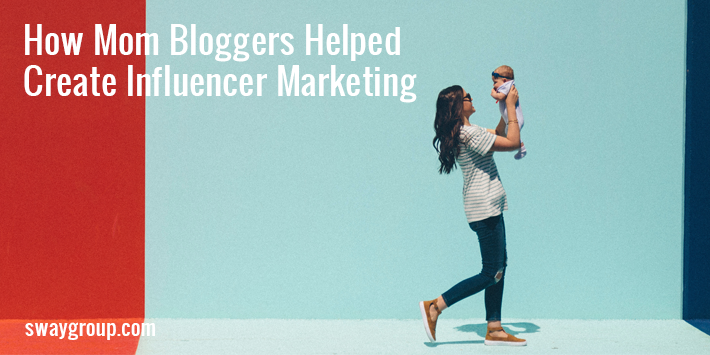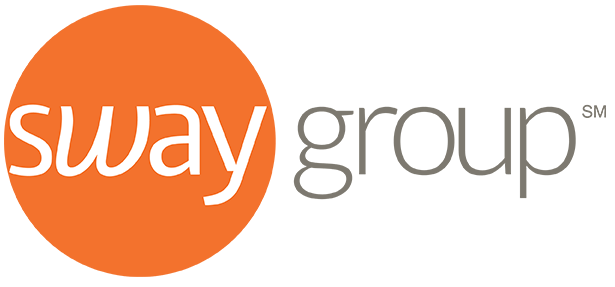The history of influencer marketing isn’t a topic often discussed. The truth is, this vibrant, growing industry that we call influencer marketing was essentially built by women out of a desire for community. When blogs (then typically called online journals or weblogs) began gaining in popularity during the late nineties, an explosion of blogging-specific resources and platforms came shortly thereafter. In 2002, we saw the dawn of “Mommy blogging,” a catch-all term for any woman who at least occasionally wrote about parenthood.

Before I founded Sway Group, I too was a “mommy blogger,” as were the women who were to become my business partners. We saw other women creating online spaces where they could express themselves and forge connections, and so we created our own. We shared our daily struggles and triumphs; we sought advice for the most difficult stages of parenthood.
In an increasingly isolated modern world, we built digital villages. We helped each other and made lasting friendships.
The True History of Influencer Marketing
We also started making money. This organically grown movement became a thousands, then millions-strong network of women listening to other women, and brands took notice. Bloggers began getting paid for affiliate advertising and banner ads, product reviews and giveaways.
Women created conferences to help each other be more successful in the blogging world, and as our numbers grew, so did the opportunities. Nobody started out to create an industry — frankly, some of us just wanted some advice about making potty training slightly less awful — but many women were able to transform their blogging hobby into a full-time job. We became entrepreneurs, founders of mini-startups with a built-in brand: our authentic selves.
In the years since, the state of mommy blogging has gone through a lot of changes. Gritty personal essays morphed into attractively staged, aspirational content; the digital environment as a whole changed from long-form web pages to shorter posts, mobile-friendly content, and social platforms. Nowadays, mom brands often operate in a niche, like food, fitness, crafting, fashion, or interior design; demographics largely changed from Generation X to millennials.
Ever since the beginning of blog monetization, women have been the content creators, creative directors, and media vehicles. We realized we could pick and choose what brand messaging we wanted to share, and how to share it. Over time, our own preferences and voices helped transform ineffective advertising (or problematically sexist, objectifying, or stereotypical portrayals) into powerful personal stories that other women could connect with.
The seemingly-humble mommy blog became a force when brands and advertisers recognized the value of these women who had built up such strong, loyal audiences. Banner-ad-driven blogs written by women paved the way for today’s thriving influencer marketing industry, which has grown to encompass a nearly endless number of verticals. Instead of showcasing static ads, influencers now execute complex content marketing campaigns, seamlessly weaving brand messaging into their own relatable voices.
While content trends continue to evolve, we are seeing an overall shift back towards the authenticity that drew us 2002 moms together in the first place. Whether it’s via Instagram post, blog update, or YouTube vlog, women simply know how to talk to women. While plenty of men have joined the influencer marketing space, women still dominate the numbers, and women are more influential when it comes to key levels of engagement: on Instagram alone, women get five time more likes than male users.
There’s no doubt women who are moms continue to be a hot marketing target: after all, modern mothers control 85% of the household purchases and have a U.S. spending power of $2.4 trillion. They spend over eight hours a day online and trust the recommendations of other moms above all else.
But parenthood, thankfully, is no longer the one defining factor about today’s female influencers. Growing platforms and audiences help women continue to broaden and diversify representations of who were are and what we care about, while participating in and building like-minded communities. Brands don’t have to sit on the sidelines hoping to throw an ad into the mix — by partnering with the right influencer, they can become part of a valuable, ongoing conversation.
As platforms evolve, so do influencer trends. For instance, some are ditching the carefully-curated images in favor of more intimate and realistic connections through mediums like Instagram Stories, while others are focusing on higher production value with set designs and professional recording equipment. We’ve seen many changes to the landscape over the years, but the one constant is growth: influencer marketing is showing no signs of slowing down.
The social influencer marketing industry has become a vital part of today’s marketing mix, and it’s all thanks to mom bloggers. I was grateful to be part of the community then, and I’m thrilled to see how many opportunities there are for brands and creators now.
Originally posted on Adweek.
